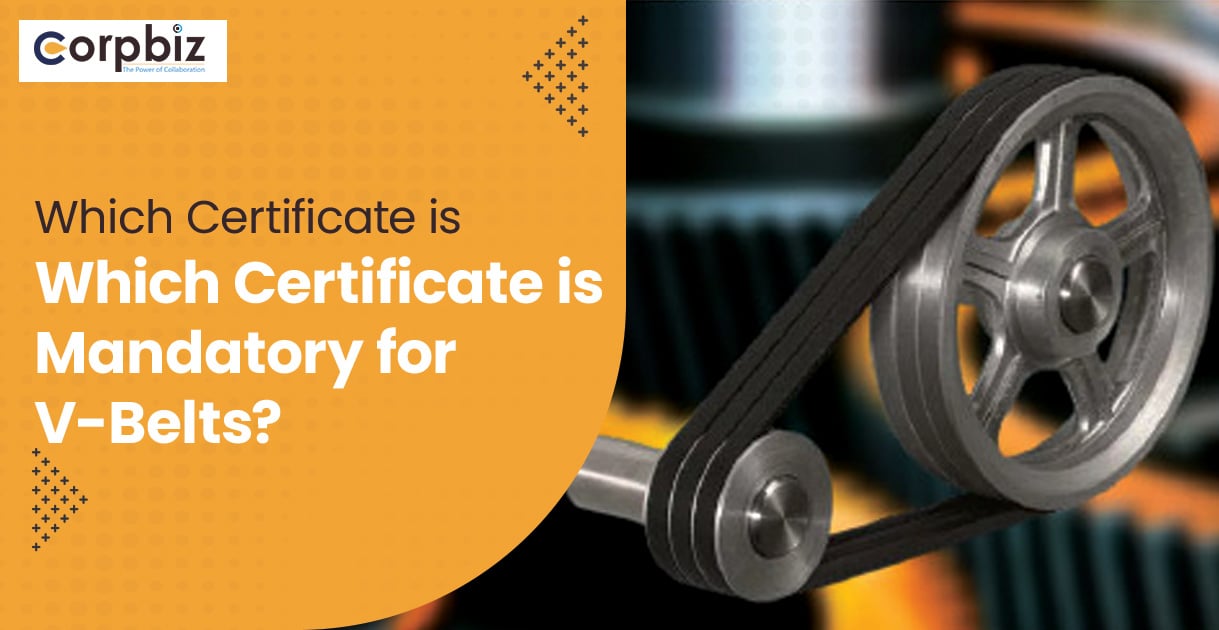Energy sources form a crucial part in the industrial landscape as they help power all machinery, equipment, and procedures. Among these, petroleum coke otherwise known as pet coke and furnace oil are the major fuels that are popular in many industries. Nevertheless, numerous individuals remain insufficiently informed about the substances, their synthesis, and their implication in environmental and industrial contexts.
Pet coke and furnace oil are the resources that play an important role for industries that consume large amounts of energy. These resources are considered as cheap sources of energy as they have been produced as a result of refining crude oil. However, they are associated with many environmental and regulatory issues.
These aspects will be revealed in this blog along with an equal amount of information regarding the advantages and disadvantages of using pet coke and furnace oil.
What is Pet Coke?
Petroleum coke, otherwise known as pet coke, is a solid carbon rich material obtained as a byproduct of the oil refining process. This is generated at the time when crude oil is being processed into by products such as gas, diesel etc.
Pet coke mainly consists of carbon content and also has minor amounts of hydrogen, sulfur, metals and some other non-carbon content.
Types of Pet Coke
There are two main types of pet coke:
1. Fuel-Grade Pet Coke: This type contains high amounts of sulfur and metals. It is also used as a fuel for industrial applications such as power plants and cement manufacturing units.
2. Calcined Pet Coke: This is a better grade of coke which has been conditioned to drive off volatile components and can therefore be used in the manufacturing of aluminum steel and other items.
Production Process
The production of pet coke involves several steps:
1. Coking: In this stage, Heavy residues from the crude oil distillation process are heated in a coker. This thermal cracking process is used to break down huge hydrocarbon molecules into smaller molecules producing coke and gaseous by-products.
2. Cooling and Solidification: The coke is then cooled and solidified to a hard dense mass.
3. Crushing and Screening: The solid coke is crushed and screened into various sizes depending on the market type and intended use.
Environmental Compliance for Pet coke and Furnace oil
In 2023, the Supreme court of India delivered a landmark judgment on the use of pet coke and furnace oil for industries, while aiming to curb down environmental consequences.
By exercising powers under Section 5 of the Environment (Protection) Act, 1986, the Central Pollution Control Board directed all State/UTs to frame and implement fuel policy. Let’s have an overview of the compliance status across various states;
- Andhra Pradesh: Permits the use of pet coke with the condition that air pollution control systems must be put in place.
- Chhattisgarh: Pet coke ban from 2017 This is with exception for the cement manufacturing industries, which are allowed to use pet coke provided that they meet some stringent set conditions.
- Goa: Published the notification of approved fuels and awaiting further consideration from CPCB in the light of SC and NGT orders.
- Gujarat: Allows pet coke only in the glass and the cement industries.
- Himachal Pradesh: Information still under development awaiting finalization.
- Karnataka: The draft policy has been formulated by the state government currently under review regarding pet coke and furnace oil.
- Kerala: Policy proposed to the state governments for their consideration.
- Madhya Pradesh: For pet coke use, the permission is allowed on case-by-case basis with provisions for pollution control.
- Maharashtra: Permits pet coke for use in certain sectors that demand strict anti-pollution measures.
- Tamil Nadu: Only permits pet coke to the cement making plant provided a safety evaluation has been conducted and the results analyzed individually.
- Telangana: Permits the utilization of pet coke with air pollution control.
Regulations that Relate to the Import and Usage of Pet Coke
The policy outlines specific conditions for the import and use of pet coke in Punjab:
1. Import Restrictions: Pet coke can be imported for individual use by registered industrial units but they should have the valid consent of the pollution control board.
2. Quarterly Reporting: It is required from the authorized importer to file their stock status with the PPCB on a quarterly basis.
3. Prohibited Trading: Pet coke trading is not allowed in any way.
Usage Guidelines for Usage of Pet Coke and Furnace Oil
Key guidelines include:
- Emission Standards: Discharge of sulfur dioxide (SO2) content should not exceed 400 mg/Nm3.
- Air Pollution Control: Industries must install anti-pollution devices like desulfurization and other similar systems.
- Monitoring and Reporting: Continues SO2 monitoring with alarm systems to quickly respond to instances of considerably high pollutants.
- Waste Treatment: Should be noted that if scrubber waste and sludge is properly treated, then a treatment and disposal of it is compulsory.
Pollution Control Provisions for the Use of Pet coke and Furnace Oil
The stringent pollution control provisions mitigate the adverse effects on the environment from pet coke and furnace oil use. These provisions are meant to ensure that industries have followed the regulatory standards for prevention of acts that adversely affect the air and water quality. Below are the detailed provisions:
Pollution NOC (No Objection Certificate)
Industries using pet coke and furnace oil shall have to get a Pollution NOC, which is always an essential prerequisite to their running. The NOC process has been classified on the basis of potential environmental impact of the industry:
Red Category Industries: Any industries that are engaged in the manufacturing of pet coke, liquefaction, coal tar distillation, or the manufacturing of fuel gas are red category industries. They shall be required to take the appropriate Consent to Establish and Consent to Operate from the state Pollution Control Board.
Orange Category Industries: Foundry operations using pet coke fall under the orange category. Such industries also have to get the consent, but the stipulations concerning such industries are slightly less stringent than in the case of red category industries.
HWM (Hazardous Waste Management) Authorization
Although pet coke itself is not entirely classified as hazardous waste, there are hazardous emissions associated with its combustion, which is why adequate handling is important so as not to cause harm to the environment by necessitating stringent waste management protocols.
Hazardous Waste Management Rules, 2016, apply to industries manufacturing products from pet coke and furnace oil, and requires getting hazardous waste management authorization for the disposal of whatever hazardous by-products are generated. The documents that have to be presented are:
Incinerator Details: Details of specifications and working details of the incinerators of any kind that are used.
Hazardous Waste Documentation: The hazardous wastes that are generated, stored, and disposed of shall be properly documented.
Environmental Impacts of Pet coke and Furnace oil
Pet coke and furnace oil use raises several environmental issues on account of the emissions associated with pollutants and greenhouse gases. The regulatory mechanisms are in place to minimize such impacts.
Emission and Pollution Problems Relating to Pet coke
Sulfur Dioxide (SO2): Pet coke contains a high amount of sulfur; its burning gives high emissions of the gas SO2, responsible for acid rain and respiratory problems.
Nitrogen Oxide (NOx): Pet coke combustion can result in the production of NOx, which causes smog and respiratory issues.
Particulate Matter: Fine particulate matter is generated from the combustion of pet coke, which gets deposited in the lungs and creates health problems.
Carbon Dioxide: CO2 is released during the combustion of pet coke. It belongs to the category of major greenhouse gases that lead to global warming.
Emissions and Pollution Issues for Furnace Oil
Sulfur Dioxide (SO2): The sulfur content in furnace oil leads to SO2 emissions, with heavy furnace oil having higher levels than light furnace oil.
Nitrogen Oxide (NOx): The Combustion of furnace oil produces NOx, which is one of the major sources of air pollution and causes hazard to health.
Carbon Dioxide (CO2): A product of the burning of furnace oil, CO2 contributes to the greenhouse effect.
Heavy Metals and Other Impurities: There can be various heavy metals present along with other impurities in furnace oil, which are emitted into the environment through combustion.
Innovations in Lowering Environmental Impact
Some of the innovation-centric trends in lowering environmental impact are mentioned below-
- Carbon Capture and Storage: CCS technology captures CO2 from industrial sources and stores it underground to prevent its circulation in the atmosphere.
- Advanced Combustion Technologies: Fluidized bed combustion, gasification are some of the innovations that will improve the efficiency of pet coke and furnace oil combustion while tamping down emissions.
- Desulfurization Technologies: Hydrodesulfurization processes reduce sulfur content in pet coke and furnace oil, hence SO2 emission.
Alternatives to Pet Coke and Furnace Oil
Some of the significant alternatives to per coke and furnace oil are given below-
- Natural Gas: There is a lower amount of SO2, NOx, and Co2 Release from the burning of natural Gas compared to Pet coke and furnace oil.
It is increasingly being used as a substitute in power generation and industrial heating.
- Renewable Energy: Solar, Wind, and biomass are gaining popularity as a sustainable alternative to fossil fuels offering a zero or negligible emission.
Conclusion
The main essential fuels constitute pet coke and furnace oil in the industrial sector, which have a high energy content and are less expensive. However, their use comes with a number of environmental problems in terms of emissions of pollutants and greenhouse gases. Though regulatory frameworks have a role in mitigating these impacts, industries also focus on cleaner alternatives and innovative technologies that reduce their environmental footprint.
One has to be aware of the properties, areas of application, and environmental concerns before using pet coke and furnace oil in order to make accurate and informed decisions. As the world is moving more and more towards a more sustainable tomorrow, the role of these fuels is going to change with increased emphasis on reducing emissions and integrating renewable sources of energy.
Frequently Asked Questions
What is pet coke?
Pet coke is the abbreviation for petroleum coke, a rich carbon solid that comes from the oil refining process. It is synthesized through the coking process, in which distillates from oil refining are submitted to thermal cracking.
What are the most frequently used pet cokes?
1. Fuel-Grade Pet coke: In industrial uses, such as in power plants and cement production.
2. Calcined Pet Coke: It is processed to expel volatiles and is applicable in aluminum, steel, and other end-use industries.Why is the utilization of pet coke and furnace oil debatable?
They release a huge number of pollutants, which consist of sulfur dioxide, nitrogen oxides, particulate matter, as well as carbon dioxide.
What is the legal status of importing pet coke to India?
The import of pet coke for fuel is prohibited, with certain exceptions for industries such as graphite electrodes and aluminum, under specific conditions.
What are the adverse environmental effects of pet coke and furnace oil?
They produce sulfur dioxide, nitrogen oxides, particulate matter, and carbon dioxide; all responsible for air pollution, acid rains, respiratory diseases, and global warming.
What are some alternatives to pet coke and furnace oil?
Natural gas, sun, solar, and biomass plants promise lower emissions and are already substituting a part of power generation and industrial heating.
Read our article: Rules Governing Hazardous Waste Disposal In India











